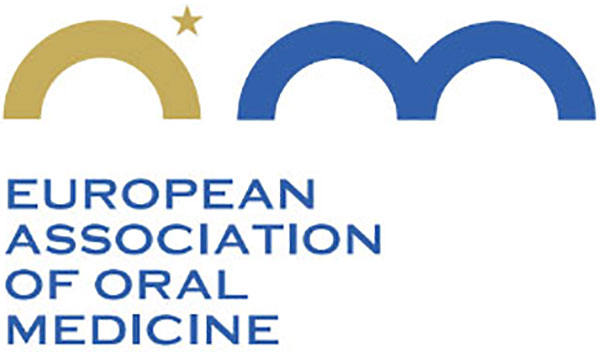Atypical & Idiopathic Facial Pain
Definition
According to the International Association for the Study of Pain (IASP), chronic facial pain refers to symptoms which have been present for at least 6 months. ‘Atypical’ pain is a diagnosis of exclusion after other conditions have been considered and eliminated (i.e. it is idiopathic) and is characterized by chronic, constant pain in the absence of any apparent cause in the face or brain. Many information sources suggest that all ‘unexplained’ facial pains are termed Atypical Facial Pain but this is not the case. Categories of idiopathic facial pain conditions include Neuropathic Pain due to sensory nerve damage, Chronic Regional Pain Syndrome (CRPS) from sympathetic nerve damage and Atypical Facial Pain.
Atypical odontalgia, or phantom tooth pain is a variation of atypical facial pain where intense discomfort is centered around a tooth or group of teeth with no obvious dental or oral disease.
Epidemiology
Atypical facial pain is more common in women than in men; most patients attending a facial pain clinic are women aged between 30 and 50 years. Although any area of the face can be involved, the most commonly affected area is the maxillary region. In the majority of patients there is no disease or other cause found. In a few patients the symptoms represent serious disease. In a small number of patients the pain may be one consequence of significant psychological or psychiatric disease.
Clinical presentation
Atypical facial pain is very variable in its presentation. Often it is characterized by continuous, daily pain of variable intensity. Typically, the pain is deep and poorly localized, is described as dull and aching, and does not waken the patient from sleep. At onset the pain may be confined to a limited area on one side of the face, while later it may spread to involve a larger area.
Neuropathic pain is a constant ache or burning feeling localized to one area in the head and neck and is due to dysfunction of the sensory nerve supply to that area of tissue. CRPS pain is often similar in character but with some change in intensity from day to day. The part of the face affected is often much more diffuse than with Neuropathic pain as the 1 sympathetic nerves each supply a much wider area than the normal sensory nerves. In
CRPS the patient will usually report a feeling of swelling of the painful tissue and often reddening of the overlying skin. Atypical odontalgia is characterized by continuous, dull, aching, or burning pain of moderate intensity in apparently normal teeth or endodontically treated teeth and occasionally in extraction sites.
Atypical odontalgia is not usually affected by testing the tooth and surrounding tissues with cold, heat or electric stimuli. Moreover, the toothache characteristics frequently remain unchanged for months or years, contributing to the differentiation of atypical odontalgia from pulpal dental pain. Occasionally, the pain may spread to adjacent teeth, especially after extraction of the painful tooth.
Aetiopathogenesis
The lack of a demonstrable organic cause and the high prevalence of anxiety and depression among patients with idiopathic facial pain have led to the hypothesis that the condition is of psychogenic origin. However, the psychological profile of these patients is similar to that of other chronic pain patients and it possible that their psychological distress constitutes a consequence rather than a cause of their pain. Genetic factors may be important in some patients developing chronic facial pain as their nerves are susceptible to damage from minor insults that would not produce chronic pain in a ‘normal’ patient. This can be seen in patients where protracted pain follows a successful minor procedure such as a tooth extraction.
Diagnosis
There are no specific tests that can confirm the diagnosis of idiopathic facial pain. A thorough clinical assessment must be carried out by an experienced clinician to eliminate other possible causes of pain, such as infections of the sinuses or teeth, undetected cancerous lesions and muscle-based pain. Neurological examination of the head and neck is always necessary, and an ENT assessment or imaging studies of the face and brain may be needed in some patients. In the case of atypical odontalgia, tooth vitality tests and radiographic examination will be needed to exclude dental disease. Often the diagnosis will change over time as the clinical findings change and stabilize. Many patients only get a final diagnosis quite late in the course of their disease as pain conditions do not always give patients ‘typical’ symptoms. This does not reflect a lack of 2 competence in the clinician. In some cases the response of the symptoms to certain drug treatments may help focus the diagnosis.
Treatment
Idiopathic facial pain is managed by a variety of methods including drugs, psychological treatments and physical treatments such as acupuncture and TENS nerve stimulation. However some patients have a poor response to all treatments, which is as disappointing for the clinician as the patient. Many patients have had consultations with a variety of specialists, multiple ineffective treatments, and often surgical explorations that have perplexed the symptoms and diagnosis.
Management of the patient is better achieved through a multidisciplinary approach intended to improve patient’s quality of life as well as relieving the pain. This involves reducing the disability caused by the pain often with an increase in mood, activity and social contact. Medical management of idiopathic facial pain is mainly through the use of tricyclic antidepressant and anticonvulsant drugs. Though developed for use in the treatment of depression or epilepsy, these medicines have proved very helpful in large numbers of patients. The tricyclic antidepressants such as amitriptyline and nortryptyline are often generally helpful in both reducing pain experience and improving mood and coping and are often the core drug treatment. More recently developed antidepressant drugs such as fluoxetine and paroxetime seem less effective. Newer antiepileptic medication such as gabapentin and valproate are very successful in treating neuropathic pain, where they are the initial drugs of choice. Education, physical therapy, psychological counseling, and alternative pain management strategies, such as acupuncture and biofeedback, may also be useful in the holistic approach to patient care. Surgical procedures are rarely effective and can aggravate the condition and may lead to a painful facial numbness called anaesthesia dolorosa.
Atypical odontalgia patients may undergo many unsuccessful dental procedures before the diagnosis is made. Once the diagnosis is made, dental treatment aimed to relieve the pain is best avoided since it can result in further deterioration of the patient’s dentition without any beneficial effect on the pain. Gabapentin or similar drugs, combined with tricyclic antidepressants can make the extremes of the pain less severe but must be used continuously, not only during an acutely painful episode.
Prognosis and complication
In some patients, modern drug treatment can completely eliminate the pain. However the treatments, whether medical, psychological or physical, more commonly only reduce the intensity of symptoms and the consequent pain-related disability. In many patients the pain in some form will remain lifelong. The pain syndromes themselves rarely lead to any life-threatening complications although in severe cases severe depression must be assessed. However, complications can follow multiple invasive treatments in an effort to abolish the pain, particularly destructive surgical procedures on nerves, which should be avoided.
Prevention
Adequate local anaesthesia during surgical procedures and good postoperative pain control may be useful in preventing sensitization of the central nervous system pain pathways and the onset of chronic pain. This is also true in patients with shingles (zoster), where appropriate antiviral and corticosteroid treatment at the time of the shingles rash can prevent nerve damage and neuropathic pain (post-herpetic neuralgia).
Further reading
1 Vickers ER, Cousins MJ, Walker S, Chisholm K. Analysis of 50 patients with atypical odontalgia. A preliminary report on pharmacological procedures for diagnosis and treatment. Oral Surg Oral Med Oral Pathol Oral Radiol Endod 1998; 85:24-32.
2 Fricton JR. Atypical orofacial pain disorders: a study of diagnostic subtypes. Curr Rev Pain 2000; 4:142-7.
3 Okeson JP. Differential diagnosis and management considerations of neuralgias, nerve trunk pain, and deafferentation pain. In: Okeson JP (Ed). Americal Academy of Orofacial Pain. Orofacial Pain: Guidelines for Assessment, Diagnosis, and Management. ed. 3, Chicago: Quintessence Publishing, 1996;73-88.
4 Crighton A .J. Facial Pain In Practical Oral Medicine - Macleod RI and Crighton AJ, Quintessence Publishing 2004

